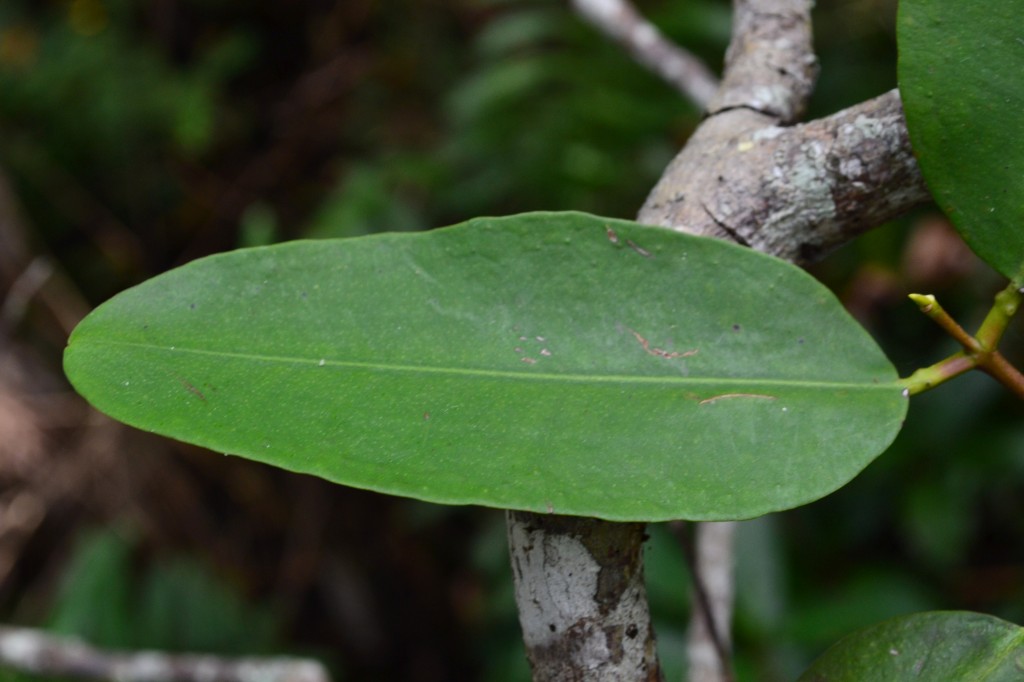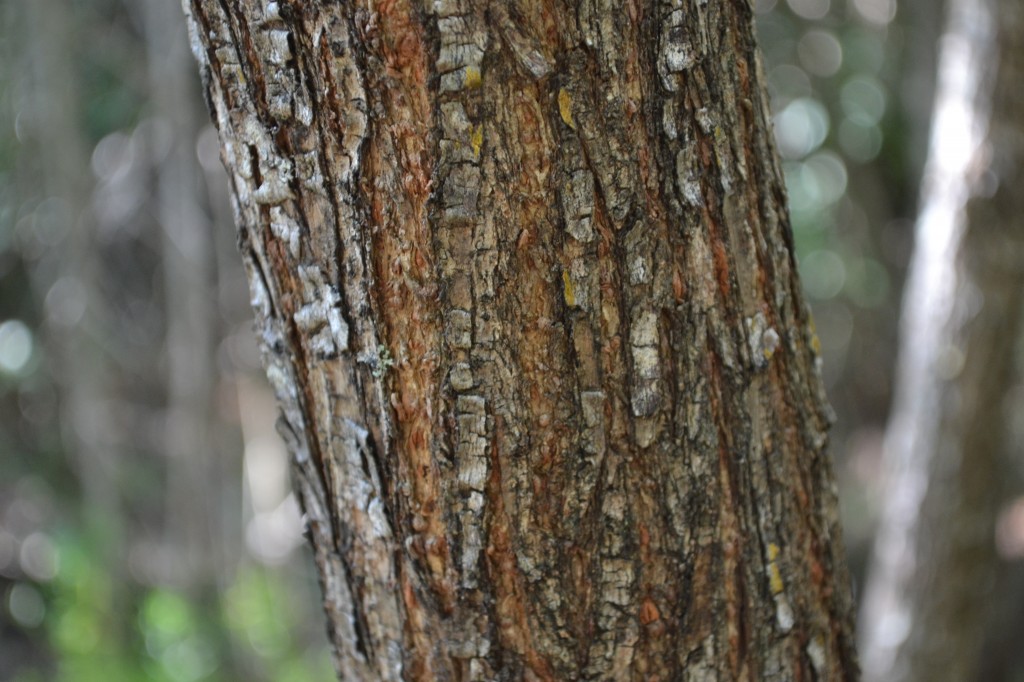White Mangrove
Laguncularia racemosa
Plant Family: Combretaceae
Leaves: Opposite, simple, oval to oblong, fairly thick, apices rounded, pointed, or slightly notched, to 10cm, light green above and below; look for two very small salt-excreting glands at the base of the leaf.
Bark: Brown to gray, fissured; breathing roots may be present, but not to the extent found in Black Mangrove.
Flowers: Dioecious, white, very small, fragrant, bell-shaped, with 5 petals, in spikes at the twig ends; typically spring into summer.
Fruits: Green to light gray-brown, broader at the apex, 2 cm long, with longitudinal ribs; holding a single seed; summer into fall.
Habitat: Coastal, at the landward edge of the mangrove zone.
Growth Form: A shrub to small tree in Florida, it grows larger further south in the tropics.
Key Features: Of the mangroves, White Mangrove has leaves the same light green color both above and below.
Comments: The root system of White Mangrove is shallow but dense, trapping sediment and preventing erosion, however, lacking prop roots, it is less resistant to hurricanes than Red Mangrove.


